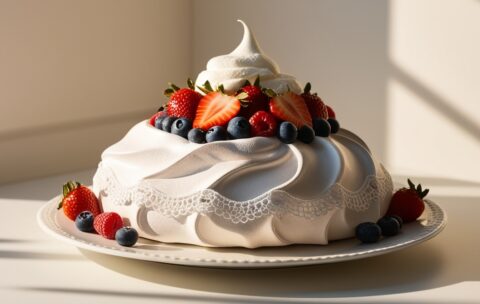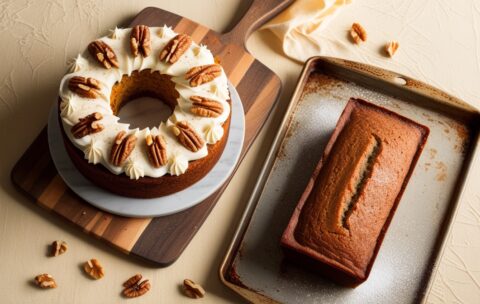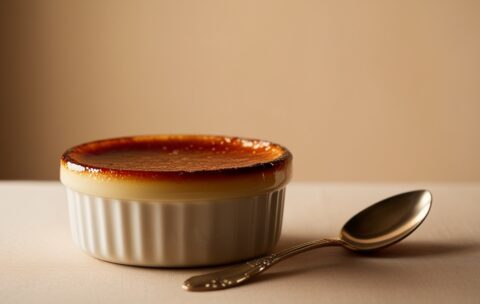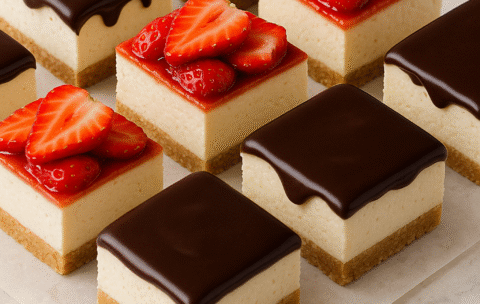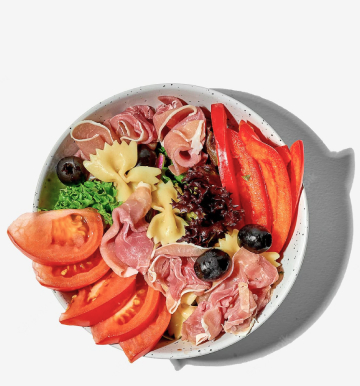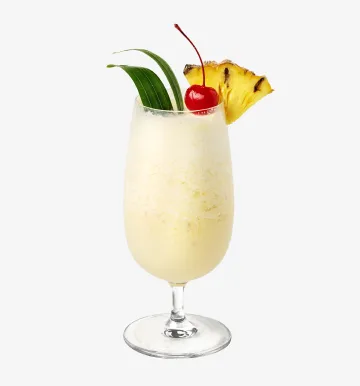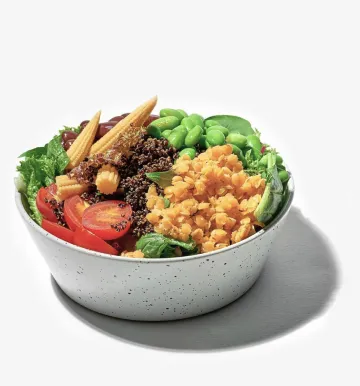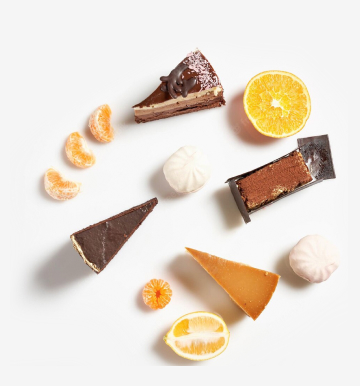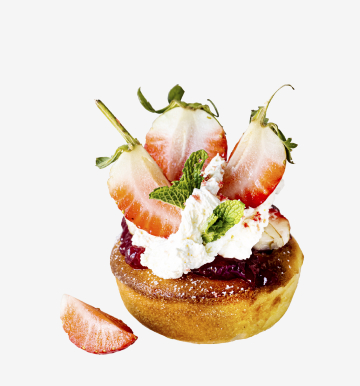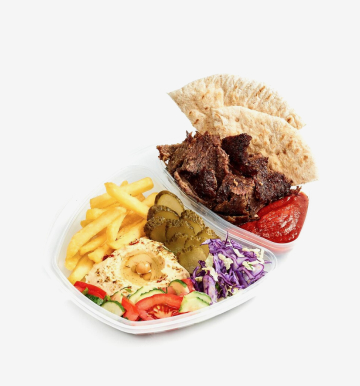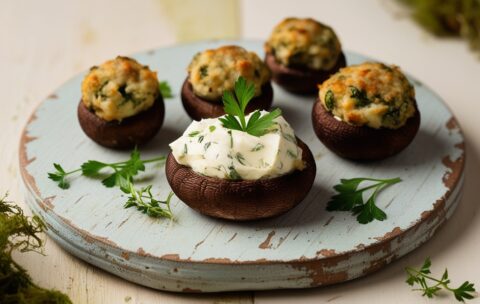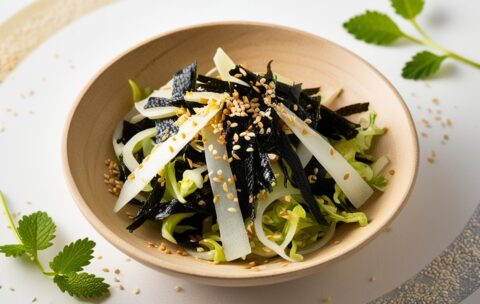Home Update 02
October 4, 2023 2025-06-05 13:04Home Update 02
Become a Home Chef
Learn to cook from scratch and master restaurant-quality meals in your own kitchen. Perfect for beginners and food lovers.

Our Top Courses
We've selected the best programs to get you started. Each course offers step-by-step lessons, hands-on recipes, and guaranteed results — even for beginners.
Moroccan Orange & Olive Salad
6 Lessons
1.6 hour
Intermediate
What you'll learn
How to segment oranges for a clean, pith-free presentation
Techniques for balancing sweet citrus with salty olives and spicy harissa
Crafting a cumin-infused vinaigrette and emulsifying dressings
Proper knife skills for uniform onion slicing and olive prep
Pavlova
4 Lessons
3.3 hours
Intermediate
What you'll learn
Meringue Fundamentals (Paragraph + List):
You’ll understand how to whip egg whites to the correct stiffness and fold in sugar without deflating the mixture.
Recognize stages of beaten egg whites (soft peaks → stiff peaks).
Techniques for incorporating sugar gradually.
Identifying when the meringue mixture is ready for baking.
**Shaping & Baking Techniques (Table):
Step Key Tip
Piping vs. Spreading Use a piping bag for defined edges; spread with a spatula for a rustic look.
Forming a Well Create a shallow indentation in the center to hold cream and fruit.
Oven Temperature Start at 120 °C (250 °F) for 15 min, then reduce to 90 °C (200 °F) to dry.
This table highlights how small adjustments in technique and temperature impact the final texture.
Cream & Fruit Assembly (Paragraph):
Learn to prepare stabilized whipped cream so it holds shape, and choose complementary fruits (e.g., kiwi, berries, passion fruit) to balance sweetness and acidity.
Ritz Paris 24K Gold Margarita
7 Lessons
55 minutes
Intermediate
What you'll learn
Ingredient Selection & Sourcing: Identify and source the highest-quality tequila, triple sec, fresh citrus, and edible 24K gold.
Classic Margarita Technique: Master the foundational steps—shaking, straining, and rim-salting—to achieve a perfectly balanced margarita.
Gold Infusion Process: Safely incorporate 24-karat edible gold flakes and gold leaf for that unmistakable shimmer.
Presentation & Garnish: Plate and garnish your 24K Gold Margarita like a Ritz Paris bartender, including gold-rimmed glassware.
Advanced Tips: Explore optional flavor variations (e.g., citrus blends, infused agave) and learn how to adjust sweetness and acidity to taste.
Eggplant Parmesan
4 Lessons
59 minutes
Intermediate
What you'll learn
Below is an overview of the key skills and concepts you’ll master by the end of this lesson.
Outcome Description
Eggplant Selection & Prep Identify firm, glossy eggplants with minimal seeds; learn to salt and remove bitterness.
Breaded Coating Technique Achieve a crisp, golden crust using both breadcrumb and flour methods.
Tomato Sauce Creation Make a balanced marinara: tomato acidity, sautéed aromatics, and fresh basil notes.
Layering & Baking Stack components without sliding, ensuring even coverage and melt.
Cheese Choices & Melting Compare mozzarella versus provolone, and understand how Parmigiano-Reggiano adds depth.
Presentation & Garnish Plate the dish with fresh herbs, extra cheese shavings, and optional balsamic glaze.
Espresso Martini
7 Lessons
2.5 hours
Intermediate
What you'll learn
Historical Background: Trace the origins of the Espresso Martini and understand its cultural impact in the mid-1980s London bar scene.
Ingredient Selection: Identify the ideal vodka and coffee liqueur varieties, plus quality indicators for fresh espresso beans.
Espresso Extraction: Master key variables—pressure, temperature, and timing—to pull a shot optimized for a cocktail.
Mixology Techniques: Learn dry-shaking and ice-shaking methods to achieve a rich, stable crema and a perfectly chilled drink.
Straining & Presentation: Discover how to double-strain for a crystal-clear pour, layer foam properly, and place garnishes without collapsing the crema.
Serving & Pairing: Explore glassware choices, serving temperatures, and ideal food pairings for various occasions.
Beef Tacos
6 Lessons
2.5 hours
Intermediate
What you'll learn
Beef Selection & Preparation: How to choose between ground beef, skirt steak, or chuck roast; trimming and cutting techniques for even cooking.
Seasoning & Marinades: Crafting a balanced spice blend (chili powder, cumin, oregano) and optional citrus-based marinade for tender, flavorful beef.
Cooking Methods: Techniques for stovetop sautéing, grilling, and slow-simmering to achieve optimal texture and taste.
Tortilla Choices & Warming: Differences between corn and flour tortillas; methods to warm or lightly char tortillas on a skillet or griddle.
Salsa & Sauce Creation: Simple recipes for pico de gallo, salsa verde, and creamy sauces (e.g., crema or chipotle aioli), including ingredient ratios and seasoning adjustments.
Taco Assembly & Layering: Order of layering (meat, salsa, cheese, garnishes) to prevent sogginess; tips on portion sizing and presentation.
Garnish Variations: Ideas for fresh cilantro, diced onions, lime wedges, pickled jalapeños, and cotija cheese to enhance each bite.
Serving & Pairings: Suggestions for sides (rice, beans, elote) and beverage pairings (margaritas, aguas frescas) to complete the meal.
Coq au Vin
3 Lessons
2.3 hours
Intermediate
What you'll learn
Ingredient Selection & Preparation:
How to choose the right cut of chicken (whole, thighs, or a combination) and select complementary wine (e.g., Burgundy Pinot Noir or alternative regional varieties).
Proper techniques for trimming, seasoning, and preparing lardons, mushrooms, and root vegetables.
Braising Fundamentals:
The importance of searing chicken pieces for color and flavor development.
How to deglaze a Dutch oven or heavy-bottomed casserole with red wine, preserving all the fond (browned bits) on the pan bottom.
Flavor-Building Strategies:
Layering aromatics—onion, garlic, carrot, thyme, and bay leaf—to create depth.
Controlling heat and timing for a slow, gentle simmer that yields tender meat and a concentrated sauce.
Sauce Reduction & Finishing Touches:
Techniques for skimming excess fat and reducing the braising liquid to a velvety consistency.
Tips for adding mushrooms and optional garnishes (parsley, fresh herbs) at the final stage for maximum aroma and texture.
Plating & Serving Suggestions:
How to present Coq au Vin with traditional accompaniments (e.g., buttered noodles, mashed potatoes, crusty bread).
Strategies for reheating or holding the dish without sacrificing quality, making it ideal for dinner parties.
Carrot Cake & Spiced Loaf Cakes
2 Lessons
2.2 hours
Intermediate
What you'll learn
How to grate carrots (or prepare alternative base ingredients) to achieve ideal moisture and texture
Techniques for toasting nuts and folding mix-ins to prevent a heavy crumb
Spice blending ratios for cinnamon, nutmeg, ginger, and cloves to balance warmth and sweetness
Methods to cream butter and sugar just enough—no overmixing—so loaves rise evenly without tunnels
Frosting options: crafting classic cream cheese frosting, drizzling brown butter glaze, and applying a neat powdered sugar dusting
Variations on the base recipe (apple-spice, pumpkin-spice, coconut-carrot) to adapt to seasonal ingredients
Crème Brûlée
5 Lessons
1.3 hour
Intermediate
What you'll learn
Custard Fundamentals (Paragraph):
You’ll discover how to create a smooth, silky custard by properly tempering egg yolks and controlling oven temperature during baking.
Flavor Infusion (List):
Selecting and preparing vanilla beans vs. extract
Balancing sugar and cream ratios for optimal richness
Incorporating subtle flavor variations (e.g., citrus zest, liqueur)
Caramelization Technique (Paragraph):
Master the process of evenly sprinkling sugar over the cooled custard and using a torch (or broiler) to achieve a perfectly caramelized, glass-like crust without burning.
No-Bake Cheesecake Layered Cake Squares
5 Lessons
3.5 hours
Intermediate
What you'll learn
Preparing and pressing the ideal crust (graham, cookie, or nut-based)
Mixing smooth, lump-free cheesecake filling with flavor variations (vanilla, citrus, chocolate)
Layering multiple cheesecake batters for striped or marbled effects
Setting and chilling methods to ensure clean, precise slices
Decorating techniques: fruit compotes, ganache drips, whipped cream piping
Cutting and serving tips to maintain sharp edges and professional presentation
Choose Your Category
Our courses are grouped by category to help you find what suits your taste. From quick dinners to gourmet desserts — start with what inspires you.



About Our Culinary Journey
We are passionate about bringing the joy of cooking to everyone. Our mission is to empower food lovers with the skills and confidence to create delicious meals at home. With expert chefs, innovative teaching methods, and a love for culinary arts, we’re here to inspire your kitchen adventures.
Our Commitment
Everyone can cook well. Our courses offer clear guidance to ensure success for all skill levels.
Community Focus
Join our foodie community. Share creations and grow in a supportive environment.
Why Choose Our Culinary Courses?
Our courses are designed to make cooking fun, accessible, and inspiring. Whether you're a beginner or a seasoned cook, our unique features will help you elevate your skills and unleash your culinary creativity.

Expert Instructors
Learn from world-class chefs with years of experience. Our instructors guide you step-by-step, sharing professional tips.

Flexible Learning
Study at your own pace, anytime, anywhere. Our online platform offers 24/7 access to lessons, so you can fit cooking into your busy schedule.

Hands-On Recipes
Practice with real recipes designed for all skill levels. From classic dishes to modern creations, you’ll master meals that impress every time.
What Our
Students Say
Hear from our happy students who have transformed their cooking skills with our courses. From beginners to seasoned cooks, our community loves sharing their success stories!
"This course completely changed how I cook! The instructors are so knowledgeable, and the lessons are easy to follow. I’m now confident making dishes I never thought I could."
Emma Johnson
"I love the flexibility of these courses. I can learn at my own pace and still feel supported. The recipes are amazing, and I’ve impressed my family with new dishes!"
Michael Chen
"The vegan cooking course was a game-changer for me. I learned so many creative ways to make plant-based meals that taste incredible. Highly recommend!"
Sophie Martinez
"The hands-on approach made learning so fun! I went from burning toast to baking artisan bread in weeks. Thank you for such an inspiring experience!"
James Carter
Discover Our Newest Culinary Courses
Get inspired by our latest additions! These exciting courses bring fresh ideas and techniques to your kitchen, perfect for food lovers eager to try something new. Browse our carousel to find your next culinary adventure.
No-Bake Cheesecake Layered Cake Squares
5 Lessons
3.5 hours
Intermediate
What you'll learn
Preparing and pressing the ideal crust (graham, cookie, or nut-based)
Mixing smooth, lump-free cheesecake filling with flavor variations (vanilla, citrus, chocolate)
Layering multiple cheesecake batters for striped or marbled effects
Setting and chilling methods to ensure clean, precise slices
Decorating techniques: fruit compotes, ganache drips, whipped cream piping
Cutting and serving tips to maintain sharp edges and professional presentation
Vegan & Gluten-Free Cake Innovations
3 Lessons
1.5 hour
Intermediate
What you'll learn
Flour Blends & Ratios: How to create balanced gluten-free flour mixes (almond, oat, rice, sorghum) and adjust for different cake styles (sponges, pound cakes, chiffon).
Binder Techniques: Use flaxseed meal, chia gel, and aquafaba as egg replacers to provide lift and cohesion; troubleshoot sticky or crumbly batters.
Moisture Control: Incorporate nondairy milks (almond, oat, coconut), fruit purées, and oil ratios to maintain tenderness without a gummy crumb.
Sweetener Alternatives: Work with maple syrup, coconut sugar, and date paste; understand how liquid versus granulated sweeteners affect texture and browning.
Flavor Innovations: Develop unique cake profiles—matcha-coconut layer, cacao-beet marble, citrus-herb infusion—using natural colorants and extracts.
Frosting & Filling Adaptations: Prepare stabilized coconut whipped cream, aquafaba meringue buttercream, and avocado-chocolate ganache; learn to pipe and decorate without dairy.
Baking Adjustments: Modify oven temperatures, bake times, and pan preparations for even rise and minimal collapse in vegan/gluten-free batters.
Troubleshooting: Identify and fix issues like dense crumb, dryness, or collapse; use gentle folding, resting times, and moisture tests to ensure success.
Mousse & Bavarian Cream Cakes
4 Lessons
4.3 hours
Intermediate
What you'll learn
How to prepare a stable French or Italian meringue for mousse bases, ensuring smooth, airy texture
Techniques for melting and tempering chocolate, fruit purées, or coffee infusions to flavor mousses
Steps for making Bavarian cream: blooming gelatin, combining with custard base, and folding whipped cream for lightness
Methods for assembling layered desserts: soaking sponge or biscuit bases, pouring mousse, and creating neat, level layers
Tips for unmolding and glazing cakes—mirror glaze or ganache—to achieve a glossy, professional finish
Variations on flavor profiles: dark chocolate-mint mousse, raspberry-vanilla Bavarian, and tiramisu-inspired cream layers
Beef Stroganoff
3 Lessons
2.3 hours
Intermediate
What you'll learn
Ingredient Selection & Preparation:
How to choose ideal beef cuts (such as sirloin, tenderloin, or ribeye) and properly trim and slice them into even, bite-sized strips.
Techniques for cleaning, slicing, and preparing mushrooms, onions, and garlic to maximize flavor release.
Sautéing Fundamentals:
Maintaining optimal pan temperature for searing beef without overcooking.
Building a flavor base by sautéing onions and mushrooms to the right level of caramelization.
Sauce Development & Balancing:
Creating a roux or pan-deglazing method to thicken the sauce naturally.
Incorporating sour cream (or crème fraîche) at the correct temperature to prevent curdling.
Seasoning strategies—mustard, paprika, Worcestershire sauce—for depth and complexity.
Timing & Texture Control:
Managing cook times to ensure beef remains tender while mushrooms and onions soften.
Knowing when to add sour cream off-heat versus on low heat for optimal creaminess.
Adjusting consistency—when to thin with stock or thicken by reduction.
Presentation & Serving Suggestions:
Plating options: over buttered egg noodles, fluffy rice, or silky mashed potatoes.
Garnishing ideas—fresh parsley, chives, or dill—for color contrast and aroma.
Tips for reheating or making ahead without sacrificing texture.
Louis XIII Pure Gold Cocktail
4 Lessons
2.3 hours
Intermediate
What you'll learn
How to select and handle Louis XIII Cognac to preserve its intricate aromatic profile
Techniques for incorporating edible gold safely and attractively
Crafting a saffron-infused vermouth modifier that enhances, not overpowers, the cognac’s rancio
Proper stirring and dilution to maintain clarity while achieving silky texture
Choosing quality orange bitters and balancing their citric-spice character against the spirit base
Presentation tips: from glass choice to garnish placement for maximal visual impact
Serving temperature guidelines to showcase every nuance of ultra-aged cognac
Stuffed Mushrooms with Herb Cream Cheese
2 Lessons
50 minutes
Intermediate
What you'll learn
How to select and clean the right variety of mushrooms for stuffing (e.g., cremini or button).
Techniques for preparing a smooth, flavorful herb cream cheese filling (including chopping herbs and incorporating garlic).
Properly hollowing and seasoning mushroom caps to maximize flavor absorption.
Baking methods to achieve a golden top and tender mushroom texture without overcooking.
Garnishing tips to add color and contrast (e.g., fresh parsley, red pepper flakes).
Storing and reheating strategies to maintain freshness when making ahead.
Daiquiri
3 Lessons
59 minutes
Intermediate
What you'll learn
The origin and evolution of the Daiquiri, from early 20th-century Cuba to modern bars.
How to select and measure white rum, lime juice, and simple syrup for optimal balance.
Proper shaking technique: ice selection, shaker fill level, and pour timing.
Glassware choice and presentation tips (e.g., chilled coupe vs. Nick & Nora glass).
Simple variations (e.g., adding fruit purée or flavored syrups) while preserving the classic profile.
Japanese Seaweed & Sesame Slaw
8 Lessons
3 hours
Intermediate
What you'll learn
How to properly rehydrate and rinse dried wakame and hijiki seaweeds
Knife skills for shredding cabbage and slicing scallions
Technique for toasting sesame seeds to maximize aroma
Balancing savory, sweet, tangy, and nutty flavors in a Japanese-style dressing
Tips for keeping the slaw crisp without sogginess
Variations for added protein (tofu, shrimp) or heat (chili oil)
Ramen Tonkotsu
4 Lessons
2.3 hours
Intermediate
What you'll learn
How to blanch and simmer pork bones and fat over high heat to achieve a milky, emulsified Tonkotsu broth.
Techniques for preparing and seasoning tare (flavor base) to complement the broth’s richness.
Methods for cooking or making alkaline-style ramen noodles to the correct chew (koshi).
Preparation of classic toppings: chashu pork (rolled braised pork belly), ajitsuke tamago (marinated soft-boiled egg), menma (seasoned bamboo shoots), and negi (green onions).
Balancing and assembling each component—broth, tare, noodles, and toppings—so the final bowl is harmonious in texture, aroma, and flavor.
Buttercream Icing Techniques
5 Lessons
59 minutes
Intermediate
What you'll learn
Buttercream Foundations: Basic ratios for American, Swiss, Italian, and French buttercreams; key differences in texture, sweetness, and stability.
Temperature Control: How to handle ingredients (room-temperature vs. chilled butter, sugar syrup stages) to prevent graininess or separation.
Flavoring & Infusing: Incorporating extracts, fruit purées, ganache, or cocoa; balancing sweetness and fat without compromising consistency.
Coloring Strategies: Best practices for gel vs. powdered colors; preventing “bleeding” or streaking when blending multiple hues (e.g., ombré or watercolor effects).
Spreading & Smoothing: Techniques for achieving glass-smooth sides (bench scraper, icing turntable, hot spatula method) and avoiding common marks or air pockets.
Piping & Decorative Textures: Creating rosettes, ruffles, ruffles, basketweave, petals, and multi-tone piping (hidden two-tone tips, reversible bags).
Stabilizing for Warm Climates: Adjusting recipes (adding meringue powder or corn syrup) so buttercream holds shape in humid or warm environments.
Troubleshooting Common Issues: Fixing grainy buttercream, curdled mixtures, overly soft or too-stiff icing; rescue methods (re-creaming, adjusting sugar syrup).


